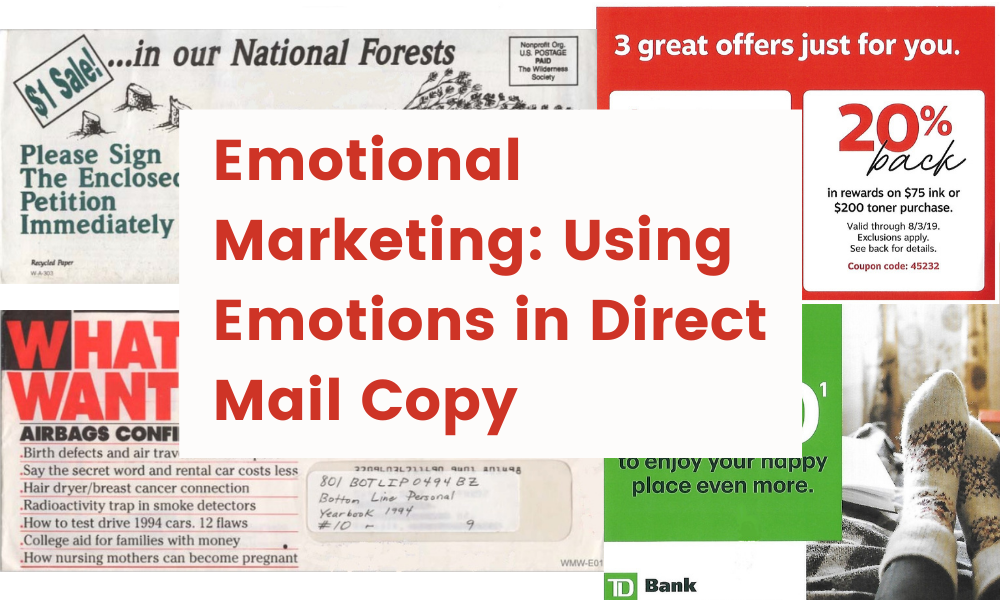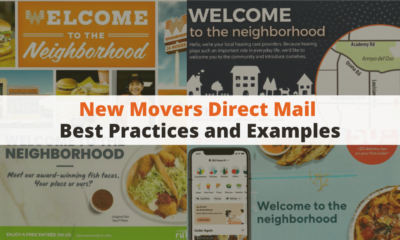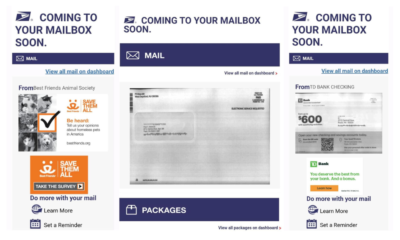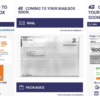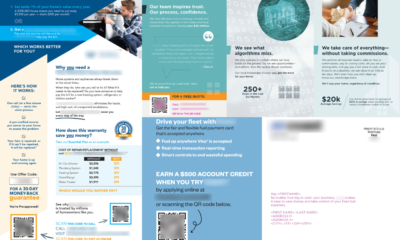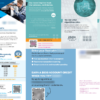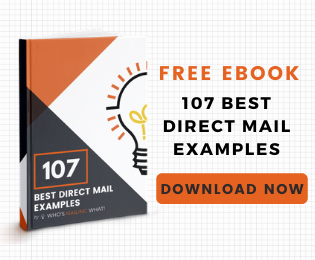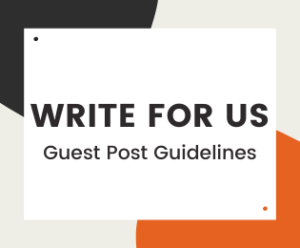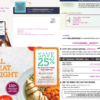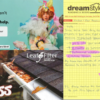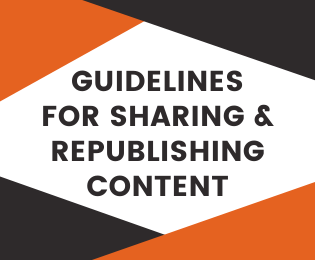TIPS & TRICKS
Emotional Marketing: Using Emotions in Direct Mail Copy
When you want to motivate your prospects to buy your products and services, nothing works as well as using emotion. Find out how to get the most out of it.
When you want to motivate your prospects to buy your products and services, nothing works as well as using emotion.
People are not machines, or Star Trek’s Vulcans. We are wired – right inside our brains – for emotions. According to a study by Harvard Business School professor Gerald Zaltman, 95% of purchasing decisions are made subconsciously. Brands and companies can help make a connection between hidden thoughts or feelings and your solution to their emotional need with a relevant direct mail campaign.
Feelings Over Facts
Even the most robust human brain can’t possibly weigh all of the statistics and facts that can be examined during the decision-making process. Instead, the mind primarily looks at what needs and interests are most strongly tied to their emotions.
For example, we often hear of or talk about “pain points” and how a solution can relieve this pain. The pain isn’t literally physical, though. Rather, it’s just a word used to describe an emotion or feeling that can be somewhat likened to physical pain. A customer whose emotions are engaged subconsciously responds to how a product or service might make them feel, and then balances that against other more tangible factors, like cost, availability, or color.
In short: while we like to think of buying decisions as only rational or based on reason, the reality is the opposite. We make a purchasing decision based on emotion, and then select certain facts to justify our action.
If you factor in human emotion to your direct mail marketing campaign, you’ll drive more responses than with a simple appeal to statistics, data, or other types of information. As the late copywriter and filmmaker Herschell Gordon Lewis often said, “Emotion outsells intellect.”
When writing the copy for a direct mail piece, you want to get inside the head (or heart, to be precise) of your prospect, to understand what it is that they feel. When you understand what their emotional pain or pleasure points are, you can then show them how you can meet their emotional wants as well as their needs.
The 7 Basic Emotional Copy Drivers
The Swedish marketing expert Axel Andersson and Seattle ad agency founder Bob Hacker identified the seven main emotional copy drivers that can trigger action:
- Fear
- Greed
- Anger
- Guilt
- Flattery
- Exclusivity
- Salvation
Note: There are other copy drivers, such as patriotism, love, and better health. But these seven are the big ones, the ones most used in direct mail. Tapping an emotional driver in the mail piece is one of the common best practices for nonprofits.
Fear
Probably the most primitive emotion, fear develops in response to a danger or a perceived threat. This can be anything – physical (health, old age, death), financial (poverty, independence), etc.
For example: “WHAT THEY DON’T WANT YOU TO KNOW” (Bottom Line Personal)
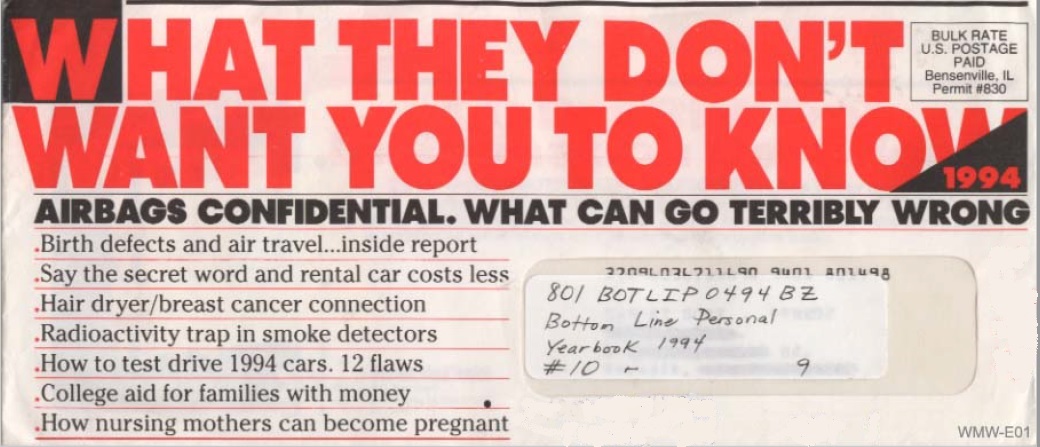
Greed
Many people have a strong desire for more – more money, more wealth, more stuff. This is very likely the most-used emotion in direct mail marketing.
For example: “An extra $500 to enjoy your happy place even more” (TD Bank)
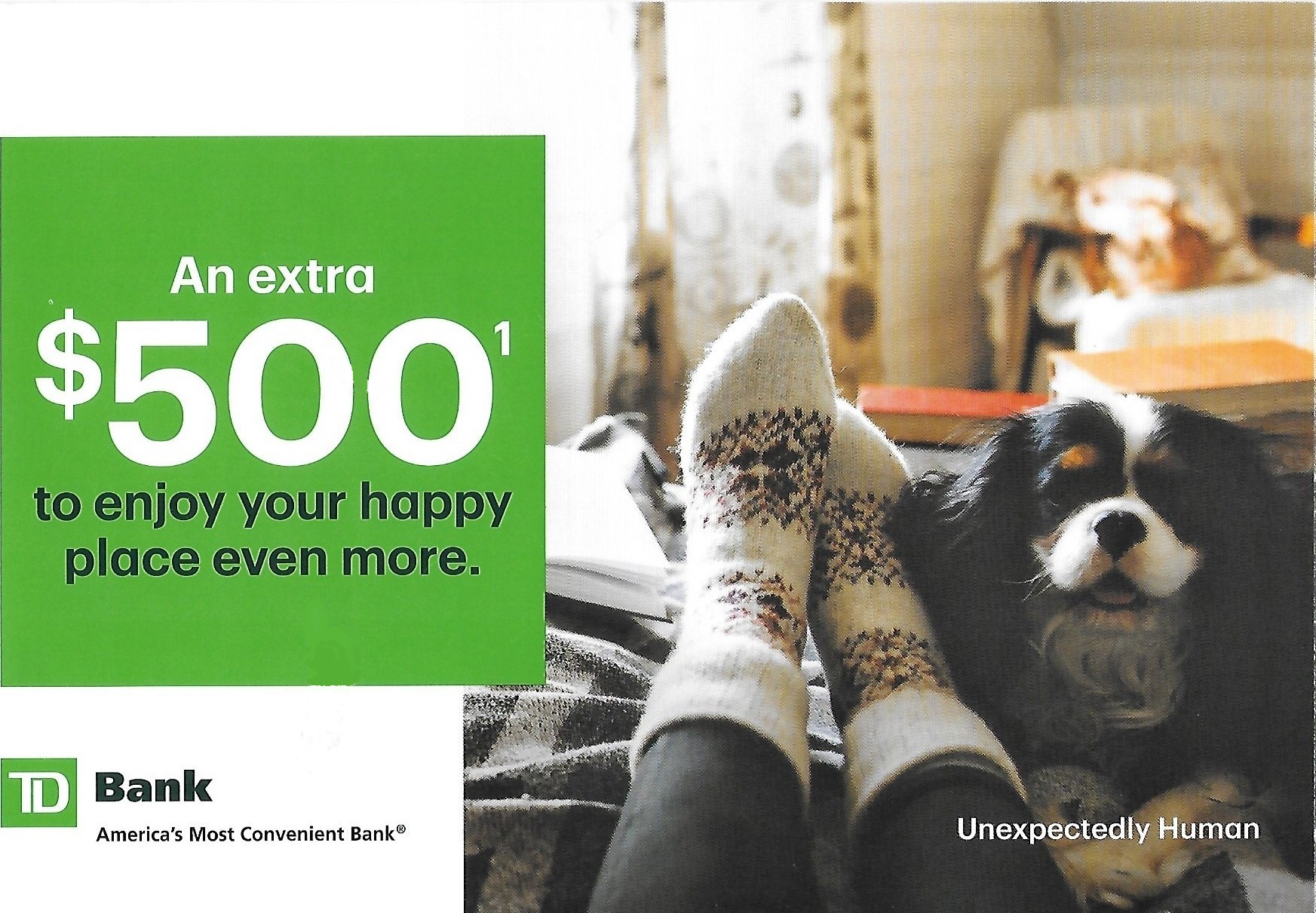
Anger
In whatever form it takes, such as annoyance, displeasure, or hostility, this feeling can be destructive. It certainly grabs a reader’s attention. But when harnessed, it can be righteous, and maybe constructive, depending on who it is targeting.
For example: “$1 Sale! … in our National Forests.” (The Wilderness Society)
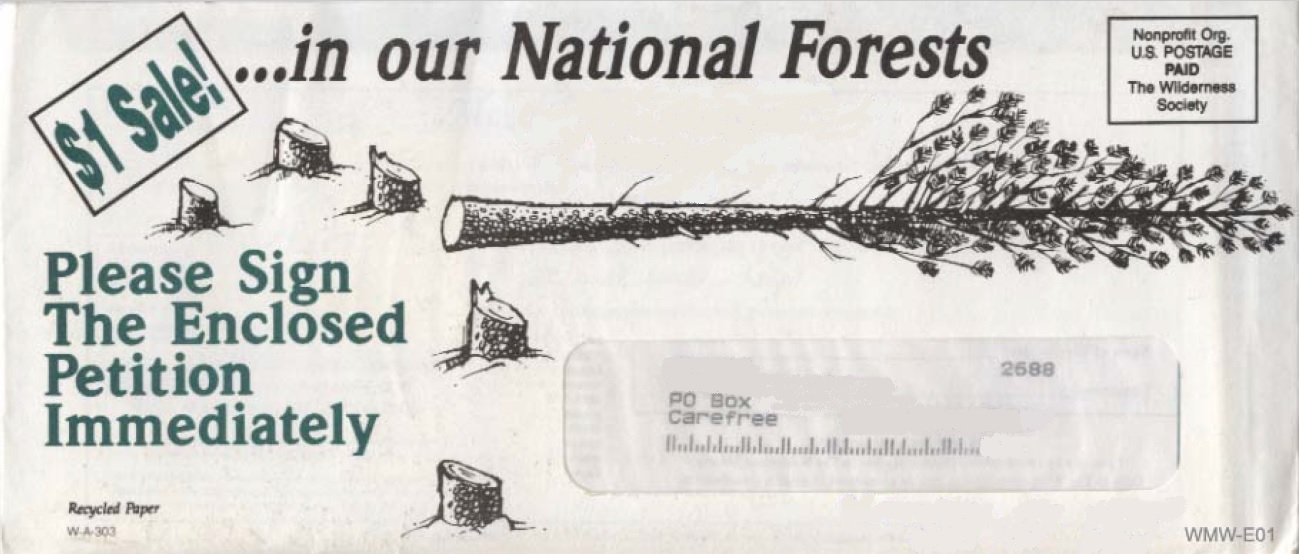
Guilt
Tell the mail recipient what could happen if they act a certain way … or fail to act. While it’s often regarded as a negative emotion, it can result in a positive gain if it taps into their empathy. Creating a good result puts the customer or donor in control and wipes their guilt away.
For example: “All Emily had to eat was crackers and jam”. (St. Mary’s Food Bank Alliance)
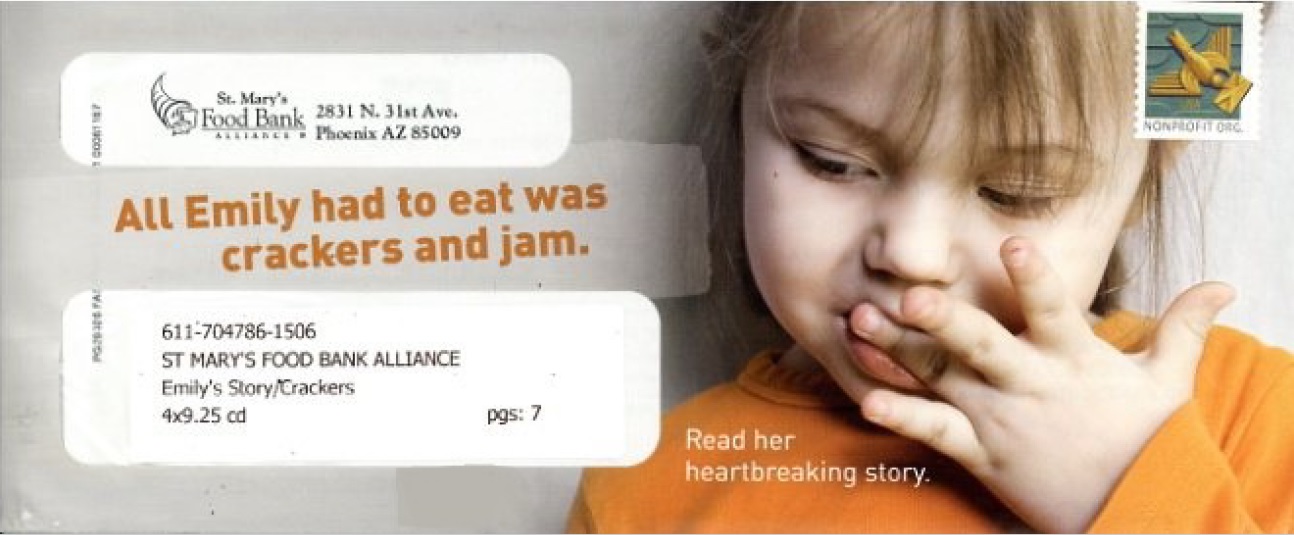
Flattery
Let’s face it: people love to hear other people say good things about them. And as the saying goes, a little flattery goes a long way; don’t overdo it. Many people can tell when they’re being played.
For example: “With the BuyPower Business Card from Capital One, business owners like you get rewarded for their hard work” (Capital One)

Exclusivity
Somewhat related to flattery, exclusivity singles out recipients for special treatment based on some attribute or characteristic. Who they are matters more, so they get opportunities others don’t.
For example: “3 great offers just for you.” (Staples)
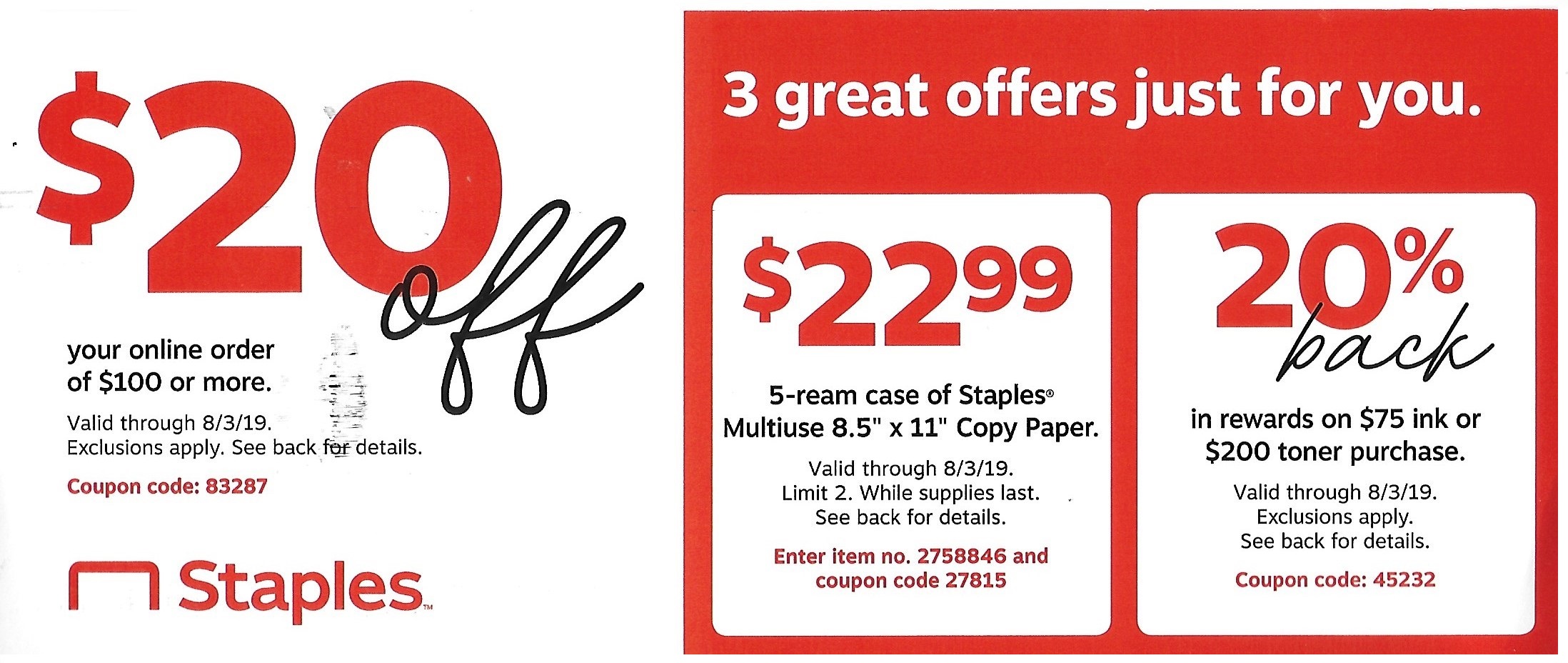
Salvation
Your customer or prospect has problems. They’re hurting. Your product or service could be the answer to the prayers, basically anything that meets a want or need. So, this is your chance to offer them solutions.
For example: “Finally, an integrated HR platform employees actually love!” (Namely)
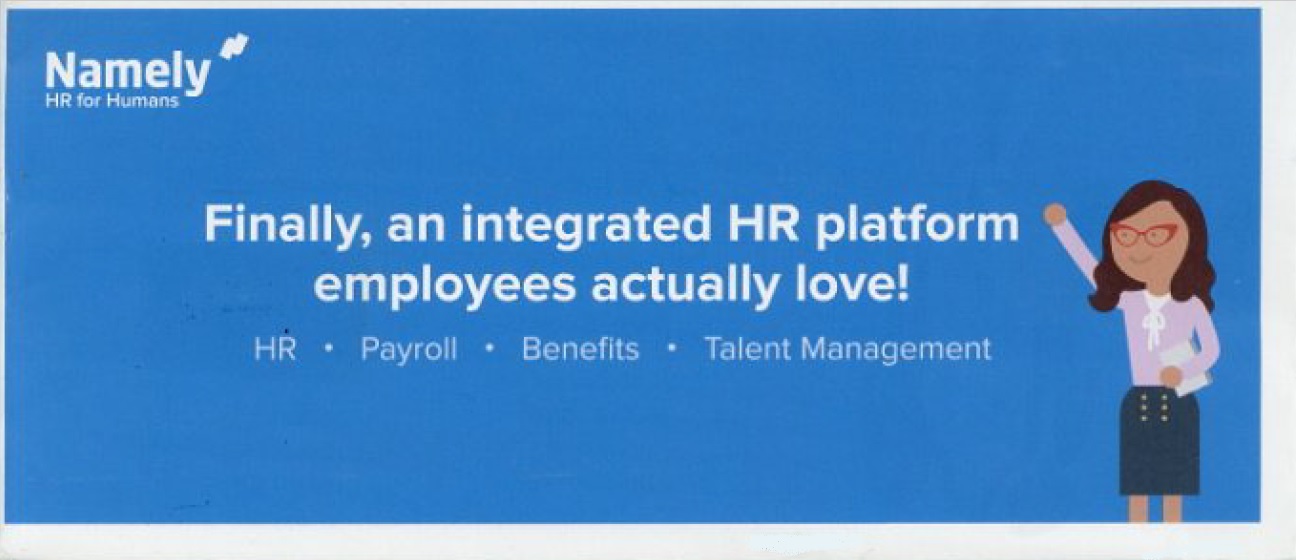
Points to Remember
#1 Context is important for how you use emotions
According to research, negative messaging works better when there is pressure to buy or donate. Positive messaging worked better when the purchasing decision wasn’t driven by a deadline or scarcity
#2 Words carry a lot of power
When chosen carefully, they can expand minds, open hearts, and remove obstacles to buying a product or service, or donating to an organization or cause.
You have many options to bring forth these feelings:
- single words
- phrases
- sentences
- headlines
- testimonials
- personalized variable data
- stories
Regardless of which one you choose, you can connect with your customer or prospect on a basic, human-to-human level.
#3 Pairing emotion-evoking images with words makes your direct mail even more powerful
Pictures capture attention, illustrate or explain your offer or theme, and ultimately, influence their buying (or giving) decision process.
You have a lot of choices as to how you use emotions in your direct mail. For them to work – to drive respondents of your mail to act – they should support your overall theme of the mailing.
As Hacker said, “If your letter isn’t dripping with one or more of these, tear it up and start over.”
How to Find Emotional Drivers in Who’s Mailing What!
As a member of Who’s Mailing What! you will be able to take advantage of a new AI-powered capability made possible thanks to Wyzoo Research. We are now in the process of building the powerful algorithm to identify emotional sentiments in the mail we catalog. For marketers, this new feature is another way to bring together data and creative elements, and derive useful insights for your work.







